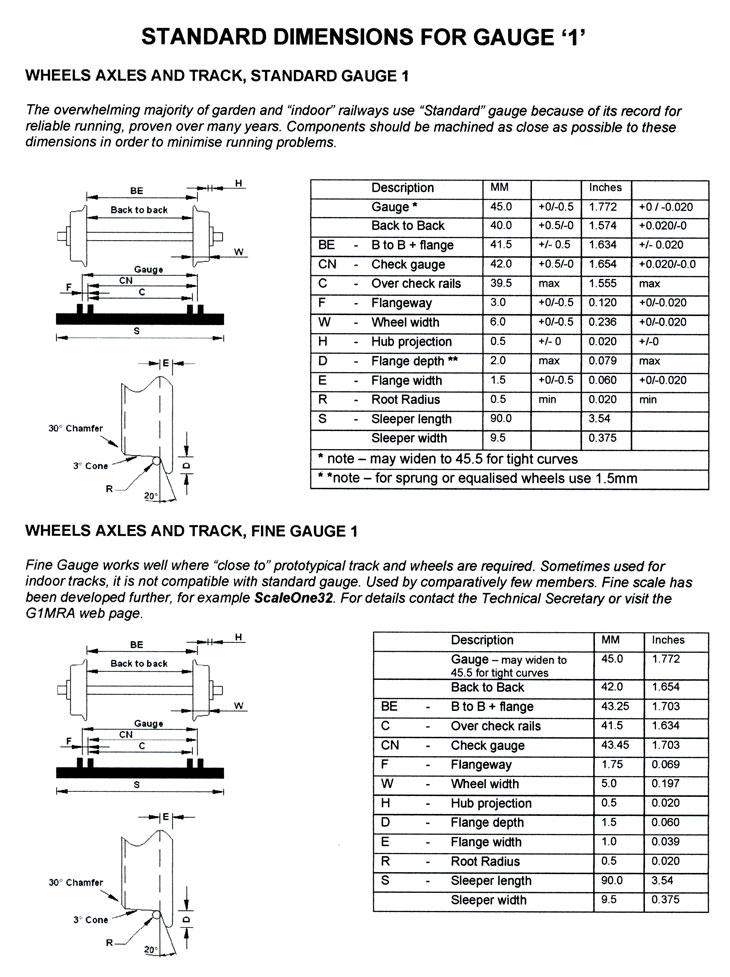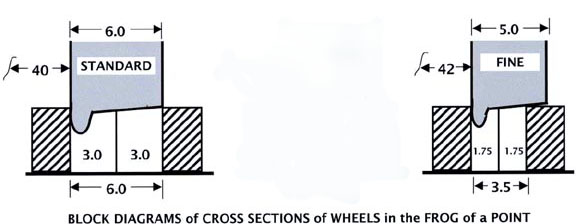


HUB THICKNESS the dimension 'H' sets a useful clearance where outside bearings are used (as in most tenders and wagons) but it does not apply to my locomotive wheel hubs which are modelled close to scale thickness and vary from class to class. It is best to make Locomotive axles after you have turned the wheels and add (twice) the actual wheel thickness to the back to back.
FLANGE DEPTHS for FINE the Standards recommend 2.0 mm flange depth for FINE when applied to unsprung vehicles. This would produce a very thin flange if combined with the 1.0 mm flange width. In practice I have not come across this combination and have always used 1.5 mm flange depth with 1.0 mm width for all fine wheels, sprung or not.
FLANGE DEPTHS for STANDARD most STANDARD modellers use 2.0 mm flange depth as specified, though some reduce to an amount between 2.0 and 1.5 mm, and a few use the 1.5 x 1.0 flange specified for FINE

28 Mar 2013